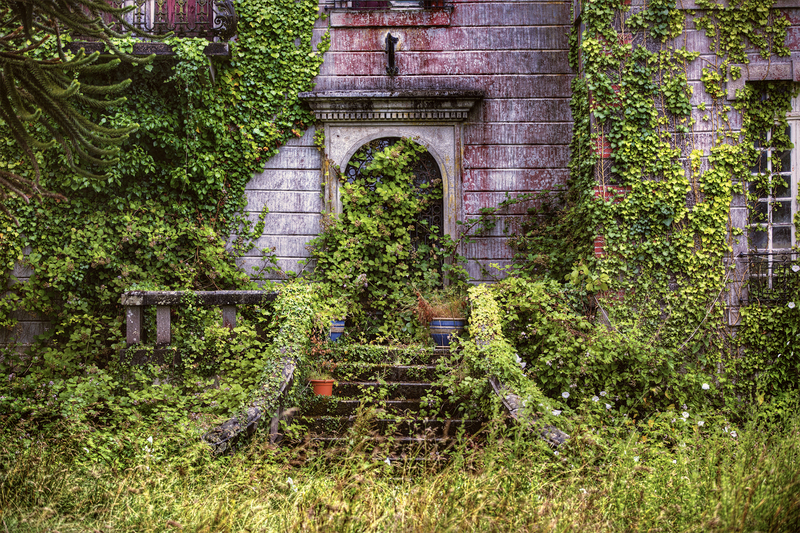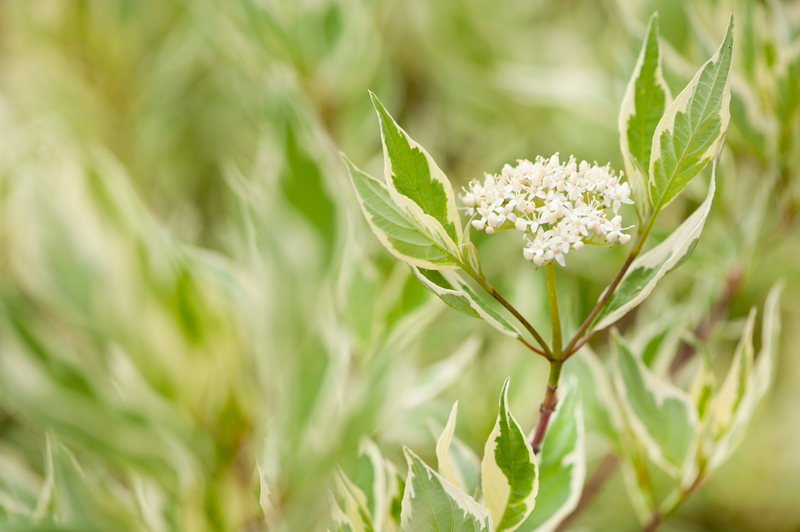Explore Artistic Techniques in Hedge Trimming and Styling
Posted on 30/08/2025
Explore Artistic Techniques in Hedge Trimming and Styling
Hedge trimming and hedge styling are more than mere landscaping chores--they are an art form blending horticulture and aesthetic mastery. Creating visually stunning, healthy, and unique hedges takes vision, patience, and knowledge of various artistic techniques in hedge trimming and styling. In this comprehensive article, we'll guide you through the essentials and expert approaches to transform your outdoor space.

What is Artistic Hedge Trimming?
Artistic hedge trimming is the practice of pruning and sculpting hedges into attractive shapes, forms, and patterns that enhance garden design. Unlike basic maintenance, creative hedge shaping involves imagination, design principles, and skillful use of both traditional and contemporary tools to create living sculptures and lush borders that define and uplift any landscape.
Why Focus on Hedge Styling?
- Visual Impact: Well-styled hedges add flair, structure, and focal points to your property.
- Personalization: Express your personality and design preferences through unique hedge patterns and forms.
- Value Enhancement: Artistic hedges can significantly boost your home's curb appeal and perceived market value.
- Environmental Benefits: Hedges provide privacy, wind protection, and habitats for wildlife, all while looking stunning.
Types of Artistic Hedge Trimming Techniques
Successful hedge styling relies on understanding various techniques employed by professional gardeners and passionate hobbyists. Let's delve into the most popular and visually striking methods.
1. Geometric Sculpting
Geometric hedge trimming is the backbone of classic garden design. By shaping hedges into precise cubes, spheres, pyramids, or rectangles, you create a sense of order and symmetry synonymous with formal landscapes such as French parterre gardens.
Tips for geometric styling:
- Use taut string and stakes as guides for straight lines.
- Employ handheld or electric trimmers for clean, sharp edges.
- Focus on proportion and regularly assess from multiple angles.
- Consistently maintain shapes for a refined appearance.
2. Topiary Art
Topiary is the epitome of artistic shaping of hedges--a discipline dating back centuries. This approach carves expressive, whimsical, or elegant forms from living greenery.
Topiary basics include:
- Animal forms: Lions, peacocks, or rabbits crafted from privet or boxwood.
- Abstract shapes: Spirals, cones, and spires that add movement to your garden.
- Themed designs: Fantasy creatures, initials, or seasonal motifs for a bespoke landscape.
Patience is key with topiary. Most designs are developed over several years, with regular, gentle trims encouraging healthy and full growth. Interactive frameworks or wire guides can help beginners experiment before tackling advanced shapes.
3. Cloud Pruning (Niwaki)
Originating in Japan, cloud pruning or niwaki involves shaping shrubs and trees into cloud-like pads or billows. This refined hedge styling technique produces an ethereal landscape that blends horticulture with Zen aesthetics.
Key elements of cloud pruning:
- Selective trimming to highlight main branches and trunk architecture.
- Rounded, organic forms that mimic clouds floating above the garden floor.
- Emphasis on balance, negative space, and visual flow rather than harsh symmetry.
Species well-suited to cloud pruning include yew, boxwood, holly, and pine.
4. Naturalistic Styling
Not all gardens call for rigid lines or fanciful topiary. Naturalistic hedge trimming embraces the unique shape and rhythm of each plant species, encouraging a lush, flowing, and relaxed landscape.
Natural styling tips:
- Allow hedges to grow slightly wilder while trimming only to maintain soft outlines and prevent overgrowth.
- Blend different species for a textured, multi-colored effect.
- Intermingle flowering hedges for seasonal interest and pollinator habitats.
5. Hedge Mosaics and Patterns
For those wishing to push artistic limits, hedge mosaics involve trimming multiple types of shrubs into intricate patterns, layers, or mazes. This complex art form can recreate geometric silhouettes, spirals, labyrinths, and even images using living foliage.
- Plan the design on paper before commencing.
- Choose plant species with compatible growth rates and textures for best results.
- Regular, detailed maintenance is essential to preserve defined lines and contrasts.
Choosing the Right Plants for Artistic Hedge Trimming
Your success in exploring artistic hedge styling begins by choosing the appropriate plants. Factors such as growth rate, leaf size, tolerance to trimming, and overall resilience play a major role. Here are some top recommendations:
- Boxwood (Buxus sempervirens): The quintessential topiary shrub, prized for its small, dense leaves and slow, controllable growth.
- Yew (Taxus baccata): Flexible and shade-tolerant, perfect for geometric lines and complex topiary.
- Privet (Ligustrum): Fast-growing, tolerates frequent trimming, and forms dense hedges quickly.
- Holly (Ilex): Offers year-round color and texture, with attractive berries in winter.
- Hornbeam and Beech: Hold their brown leaves through winter, lending seasonal structure and visual appeal.
- Escallonia, Lonicera, and Photinia: Popular for flowering or colored foliage varieties in decorative hedges.
Essential Tools and Equipment for Hedge Styling
Comprehensive hedge trimming artistry requires more than just a pair of shears. Advanced results stem from using the right equipment for precision, efficiency, and plant health.
Basic Tools:
- Manual hedge shears for detailed cuts and shaping
- Electric or battery-powered trimmers for large or thick hedges
- Secateurs and loppers for harder-to-reach branches and fine detail
- String, stakes, and measuring tape for accurate lines and symmetry
- Protective gloves, goggles, and sturdy shoes for safety
Specialist Tools:
- Topiary frames and wire guides to support complex shapes
- Step ladders or stable platforms for tall hedges
- Long-reach trimmers for accessibility
Keep all blades sharp and clean to avoid tearing branches, which can invite disease.
Step-by-Step Guide to Artistic Hedge Trimming
Ready to create your masterpiece? Follow this detailed process to achieve professional-looking results in hedge styling and trimming.
1. Plan Your Design
- Study your garden space and envision the desired effect--formal, playful, abstract, or naturalistic.
- Sketch designs or seek inspiration from gardening books and online galleries.
- Consider each plant's mature size and shape--never force a species into an unnatural form.
2. Prepare the Tools and Site
- Sanitize all cutting tools to prevent the spread of pests and diseases.
- Set up equipment and mark outlines with chalk, stakes, or string to act as guides.
- Clear the area of debris and inspect for wildlife nesting within the hedge before trimming.
3. Initial Shaping
- Remove dead, diseased, or crossing branches for a healthy base.
- Define the rough outline of your chosen shape, cutting away excess gradually.
- Step back frequently to check overall form and symmetry.
4. Refinement and Detailing
- Carefully trim small sections at a time for precision, especially with complex designs.
- Use specialist shears for topiary or intricate work.
- In geometric patterns, double-check all angles for consistency. In naturalistic styles, focus on smooth transitions.
5. Aftercare
- Rake up clippings to prevent fungal issues and pests.
- Water the hedge thoroughly, especially after major pruning.
- Apply a balanced fertilizer if growth seems slow or sparse.
- Repeat light trims several times throughout the growing season to maintain shape.
Expert Tips for Artistic Hedge Trimming
- Work gradually: For ambitious designs, prune lightly and regularly rather than heavily at once.
- Mind the growing season: Late spring and summer are best for most decorative work; avoid frost-prone periods to reduce stress.
- Maintain lower width: Keep the hedge's base slightly wider than the top to allow sunlight for all sections.
- Respect plant limitations: Not all species withstand severe shaping--when in doubt, consult local experts or forums.
- Hedge health comes first: Artistic results depend on vigorous growth. Watch for pests, nutrient deficiencies, and signs of stress.
Common Mistakes in Hedge Styling (and How to Avoid Them)
- Over-pruning: Removing too much foliage at once weakens the plant and can cause unsightly bare patches.
- Ignoring plant needs: Some hedges respond poorly to severe shaping or require different trimming schedules.
- Neglecting symmetry: For geometric art, uneven cuts can ruin the intended look. Always stand back to check work.
- Forgetting aftercare: Uncollected clippings and lack of fertilization invite disease and hinder new growth.
- Underestimating time and patience: Achieving mature, beautiful shapes often takes years of dedicated care--not weeks.

Trends and Inspiration in Creative Hedge Design
Modern hedge sculpting and styling fuses tradition with innovation. From minimalistic cloud pruning in contemporary homes to urban topiary art installations, there's endless scope for creative expression. Gardens can tell a story or evoke a mood through varied hedge styles and plant choices.
- Living garden rooms: Shaping tall hedges into 'walls' forms outdoor sanctuaries for relaxation or dining.
- Edible hedges: Incorporate bay laurel, rosemary, or berry bushes for artistry and utility.
- Whimsical shapes: Animal or surprise motifs delight children and visitors alike.
- Eco-friendly planting: Native and pollinator-attracting hedges styled artistically for biodiversity.
Browse social media and garden design magazines for current hedge styling trends or visit public gardens for real-life inspiration.
Conclusion: Elevate Your Garden with Artistic Hedge Trimming
Exploring artistic techniques in hedge trimming and styling transforms your garden into a living canvas. Whether you prefer formal symmetry, whimsical topiary, zen-like cloud forms, or wild naturalism, there's a style and technique suited to your space and ambition. With the right tools, plant choices, patience, and regular maintenance, you can create striking outdoor spaces that enchant and inspire for years to come.
Are you ready to unleash your creativity? Start small, refine your skills, and transform your hedges from ordinary to extraordinary!



